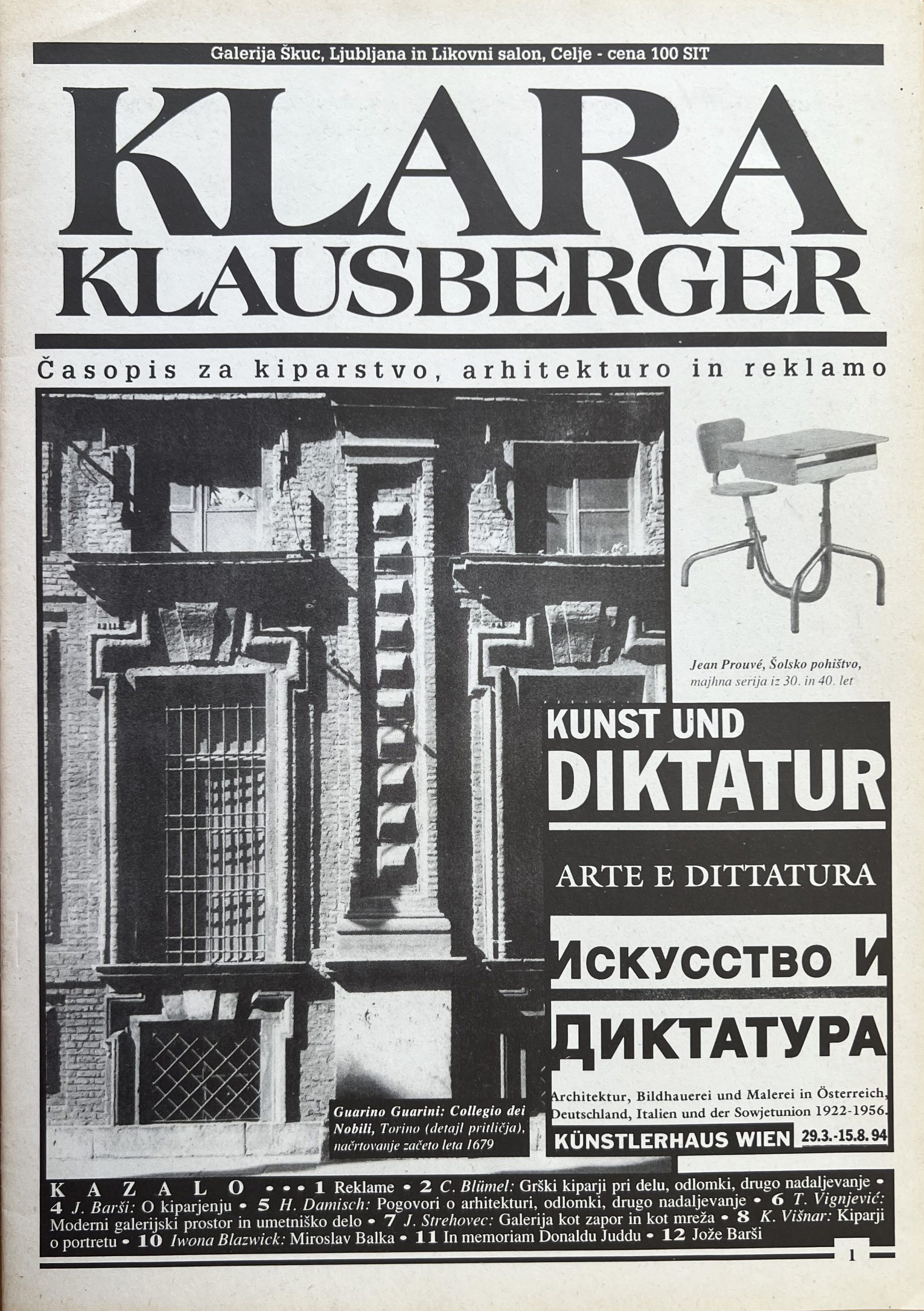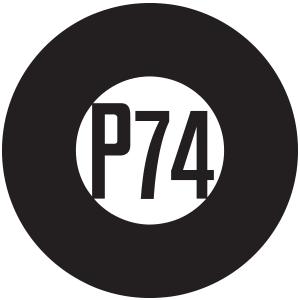
Klara Klausberger, Jože Barši, 1993
3 – 27 March 2023
P74 Gallery
>exhibition view @P74 Gallery
_____
In recent years, Jože Barši has repeatedly used the written word and various philosophical texts as his basic medium of expression. He was particularly interested in authors who, in his opinion, were forgotten or misunderstood. Klara Klausberger is the name of the newspaper he published in 1993 at his exhibitions. In a few folded A3 pages, the newspaper covered the topics of sculpture, architecture, and advertising. The front page was dedicated to advertising what he liked at the time (Mies van der Rohe’s architecture, Jean Prouve’s school furniture), the inner pages to texts on sculpture and architecture, while on the back page, he published a photo of his work. The front page of the Zero Issue of the newspaper featured the following statement: “I like newspapers and I don’t know what to do with catalogues”. In the next issue, the news about the death of the sculptor Donald Judd was published.
The current exhibition continues the theme of remembering and forgetting. In each of the two gallery spaces, he develops a special topic, one dedicated to newspapers and the other to the work of Donald Judd. In a time that doesn’t favour printed editions of newspapers, he highlights the physicality of newspapers that he collects over a long period of time. He is still interested in newsprint as a designed carrier of diversity and contents of newspapers. He transforms the gallery into the interior of a large kiosk. As part of the exhibition, he quotes one of Donald Judd’s pieces, takes a critical stance toward his work, and summarizes it in a way that changes Judd’s ideas. He is interested in whether there is still something operative in the modernism of the 1960s in relation to today. Judd, known for his minimalist works that were not burdened with functional content also made furniture. But with furniture, although formally very similar to his artistic practice, he was reserved as an artist. The abstraction of the minimalism of that time was in a way the canon of minimalism. Barši is interested in the intersection of these two practices, the formalism of minimalism on the one hand and the furniture utility on the other.
______
Jože Barši (1955) graduated from the Faculty of Civil and Geodetic Engineering (architecture) and the Academy of Fine Arts and Design (sculpture), where he also completed his specialization. His work encompasses diverse areas of interest, from site-specific works to radio broadcasting as an exhibition space, public lectures, sound, and conceptual works. Since 1988, he’s been teaching at the sculpture department of the Academy of Fine Arts and Design in Ljubljana, since 2006 as a full professor. He was a visiting professor at Indiana University of Pennsylvania, Indiana, Pennsylvania, USA (2001). He represented Slovenia at the Venice Biennale (1997) and participated at the 4th International Istanbul Biennale (1995). He is the recipient of the Golden Bird Award for Visual Arts (2010) and the Jakopič Award (2014). He has participated in numerous international and domestic seminars, conferences, and exhibitions, such as Grammar of Freedom. Five lessons: Works from the Arteast 2000+ Collection, Garage Museum of Contemporary Art, Moscow (2015), 1 : 1, Stopover, Museum of Contemporary Art Metelkova, Ljubljana (2014), Jože Barši, A Retrospective, Museum of Contemporary Art Metelkova, Ljubljana (2013), The Present and Presence – Repetition 1 and 2, Museum of Contemporary Art Metelkova, Ljubljana (2012), and many others. Over the years, Jože Barši has given several public lectures and participated in several residencies abroad.
